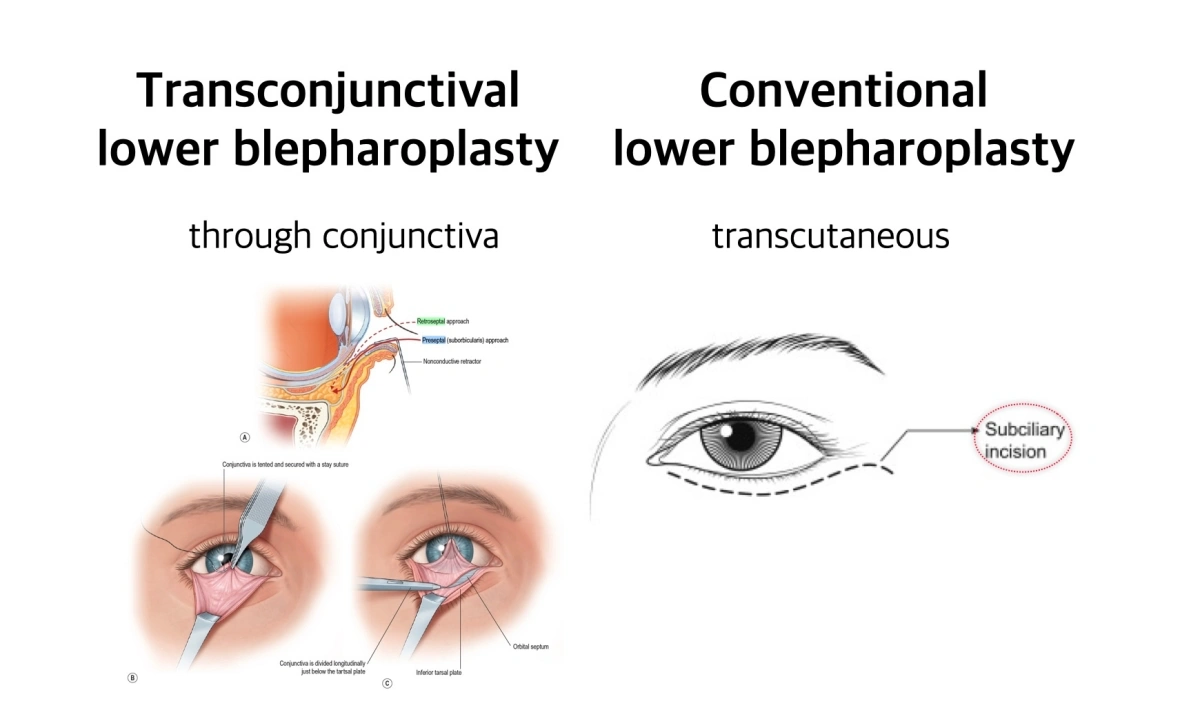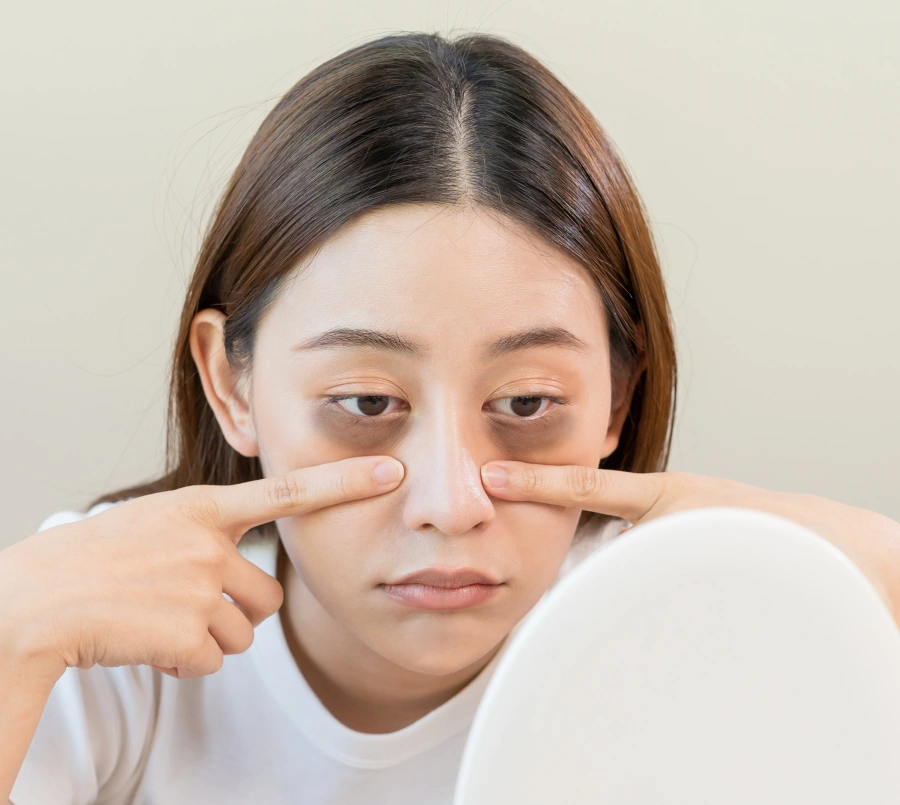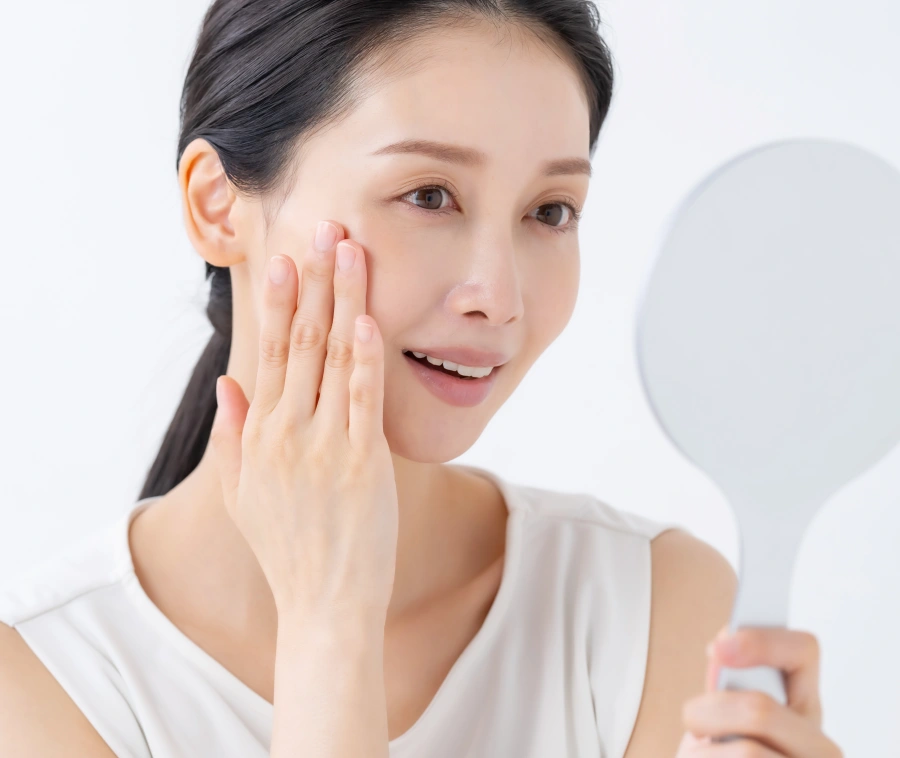Lower Eyelid Blepharoplasty: Best Treatments for Eye Bags and Hollow Eyes
2025-05-08
What Is Lower Eyelid Blepharoplasty?
Cosmetic lower blepharoplasty, also known as lower eyelid surgery, is a procedure designed to remove or reposition excess fat and tighten the skin under the eyes. It treats puffiness, dark circles, and hollow eyes, restoring a more youthful and rested appearance. At Noonopi Plastic Surgery in Seoul, we offer both traditional lower blepharoplasty and advanced techniques including transconjunctival lower blepharoplasty and fat repositioning. It is important to note that lower eyelid retraction is a potential risk during these surgeries, especially in patients with specific eye morphologies.
Surgery Techniques: Transconjunctival vs External Incision
Transconjunctival Lower Blepharoplasty
For patients with prominent fat pockets but good skin elasticity, this technique avoids external scars by making an incision inside the lids, which is called the"conjunctiva". It is also called scarless lower bleph or eyebag removal without incision, and it is recommended for those age 30s to early 40s.


Skin-Incision Technique
In cases with significant wrinkles or loose skin, a fine incision is made just below the lash line to remove excess skin. This is usually called Lower bleph and both precise fat transposition and lid skin tightening are possible. This is often combined with fat grafting for those with severe under-eye hollows and less eye bags.


When Is Fat Grafting Needed?
If the under-eye hollowness is severe, especially in patients with sunken tear troughs or after excessive fat removal from previous surgeries, a fat injection (nano or micro fat) can be recommended.
Fat can be harvested from the abdomen or thighs and injected to smooth the lid-cheek junction. This method helps restore volume, minimize shadowing, and create a seamless contour.

Fat can also be used to treat dark circles because of stem cell effects in nano fat.

Laser peels can also be used as an ancillary procedure to enhance the results, improving skin texture underneath the eyes, especially for those who do not want skin incision methods for faster recovery.
What to Expect from the Results?
- Eye Bags: Reduced puffiness and smoother contour
- Hollowness: Plump and youthful under-eye area
- Dark Circles: Often improved due to better light reflection, skin tension, and enhanced skin quality
- Lower Eyelid Wrinkles: Minimized appearance of wrinkles and dark circles, resulting in a more youthful look
Downtime: Minimal with transconjunctival; about 5–7 days for incision methods

2month after lower eyelid surgery


Fat Graft vs Fillers: Which Is Better for Hollow Eyes?

Fillers may be suitable for minimal hollowness or those who want a temporary, non-surgical treatment. However, they cannot remove excess fat or skin and have risks of irregularities. In plastic surgery clinics in Gangnam, many patients who are unhappy with fillers later opt for blepharoplasty surgery. Sad but true.
In Fat graft, they need more downtime compare to fillers but are more human tissue friendly.
| Procedure | Pros | Cons |
|---|---|---|
| Fat graft | Long-lasting, Biocompatibility | Requires downtime |
| Fillers | Quick, non-surgical | Temporary, risk of lumps or Tyndall effect May be potential obstacle in future surgeries |
Non-Surgical Eye Lift
If you’re not ready for surgery, consider these options:
Laser lower blepharoplasty
Skin tightening with minimal downtime
Laser resurfacing
Rejuvenates skin by improving quality and addressing fine lines and dark circles
Eyelid Lift Laser
RF-based devices… like Xerf skin tightening procedures
These treatments can improve mild signs of aging but won’t remove large fat pads or fix structural hollowness.
Preparation for Surgery
Preparation for eyelid surgery involves several steps to ensure a smooth and successful procedure. Patients are advised to arrange for a trusted family member or friend to drive them home from the surgery and stay with them the first night after the procedure. It’s also essential to follow the surgeon’s instructions regarding medication, diet, and lifestyle changes before the surgery. Additionally, patients should prepare their home for recovery by having ice packs, comfortable pillows, and easy-to-eat meals readily available. A thorough consultation with an oculoplastic surgeon or facial plastic surgeon will help determine the best approach for the individual’s needs, whether it’s a transconjunctival lower blepharoplasty, upper eyelid surgery, or a combination of procedures like blepharoplasty with fat grafting.
Why Choose Noonopi Korea for Lower Blepharoplasty?
Korean plastic surgeons are globally recognized for their delicate approach, minimal scarring techniques, and natural results in cosmetic surgery. At Noonopi Plastic Surgery, we specialize in blending function and beauty with patient-specific customization. Korean surgeons are also renowned for their expertise in facial plastic surgery, ensuring safe and effective results.
Recovery and Aftercare

The recovery and aftercare process for eyelid surgery typically involves managing swelling, bruising, and discomfort. Patients are advised to apply ice packs, keep their head elevated, and avoid strenuous activities for several days. It’s also crucial to follow the surgeon’s instructions regarding wound care, medication, and follow-up appointments. The recovery time may vary depending on the extent of the procedure, but most patients can return to their normal activities within a 5 to 10 days. To minimize the risk of complications and ensure optimal results, it’s essential to choose a qualified and experienced plastic surgeon who specializes in cosmetic eyelid procedures. By combining proper preparation, a skilled surgeon, and diligent aftercare, patients can achieve a successful and satisfying outcome from their eyelid surgery, whether it’s a lower eyelid surgery, upper blepharoplasty, or a comprehensive approach addressing both the upper and lower eyelids.
